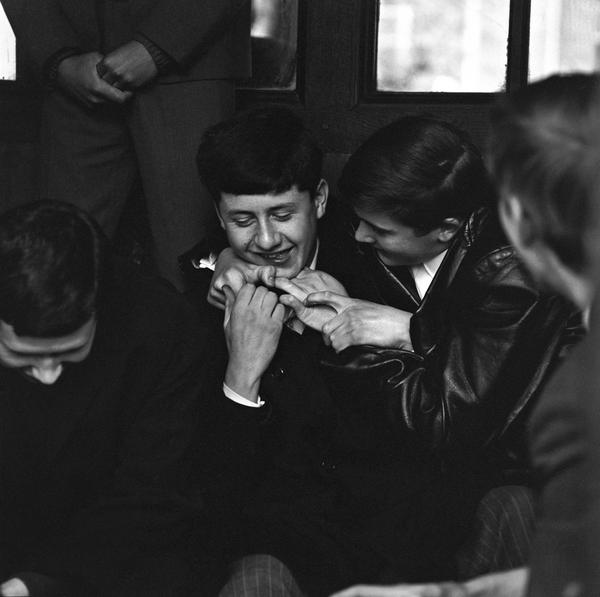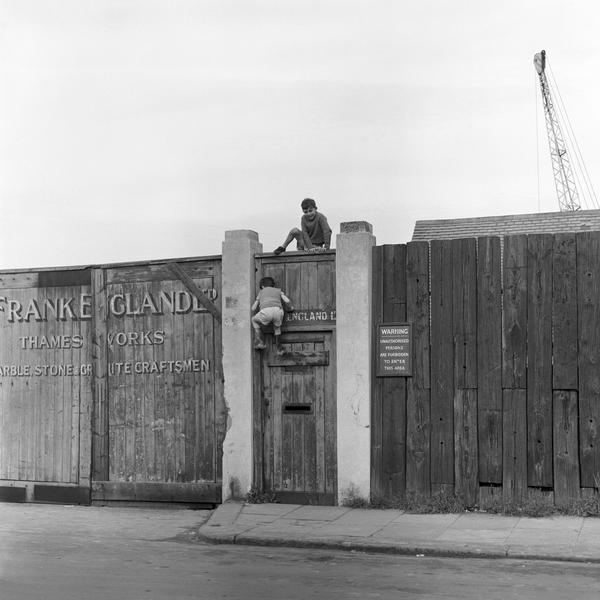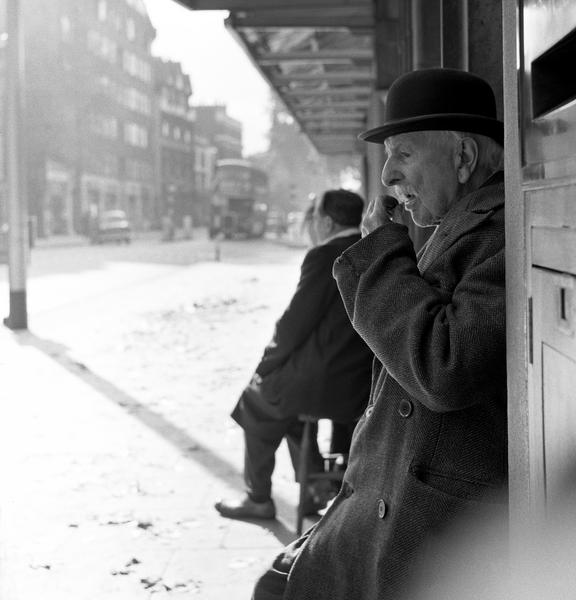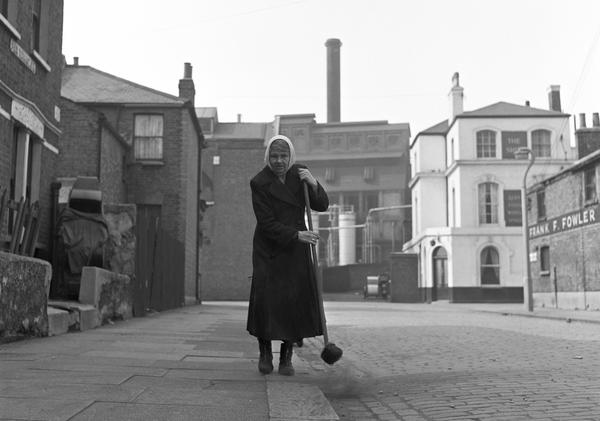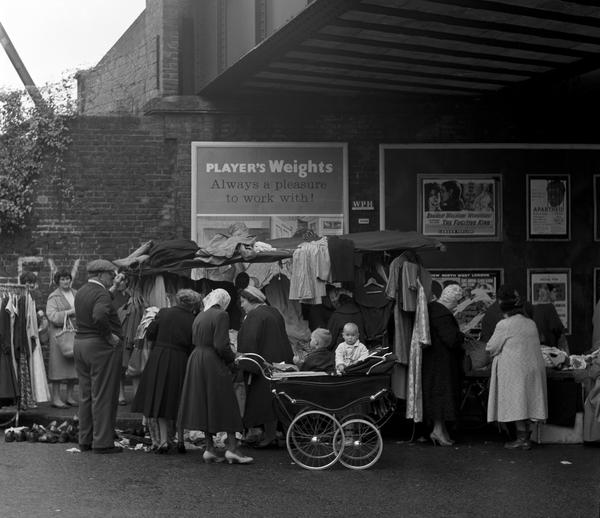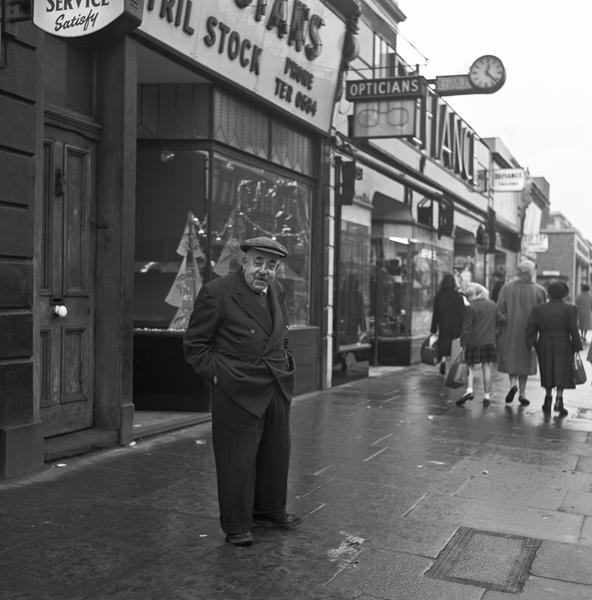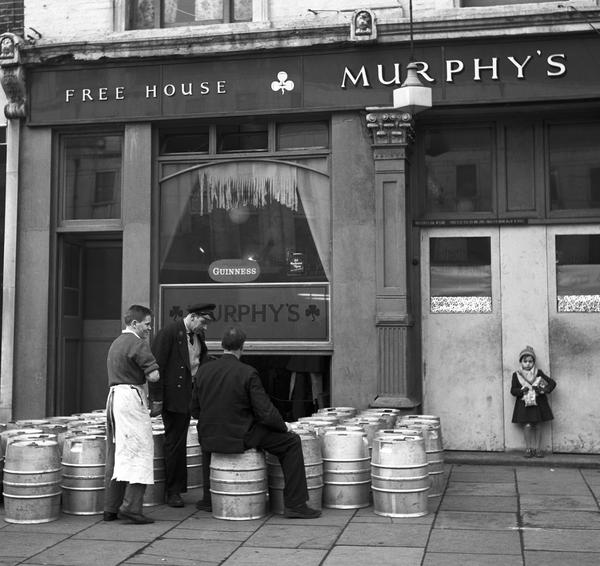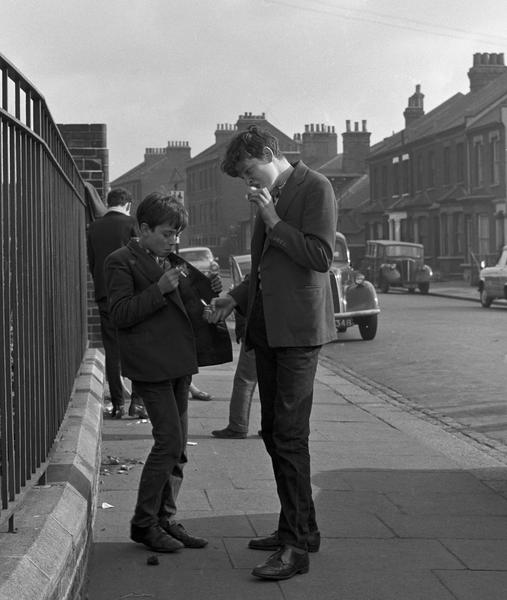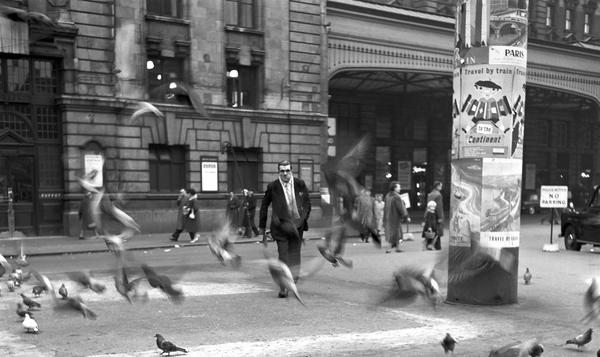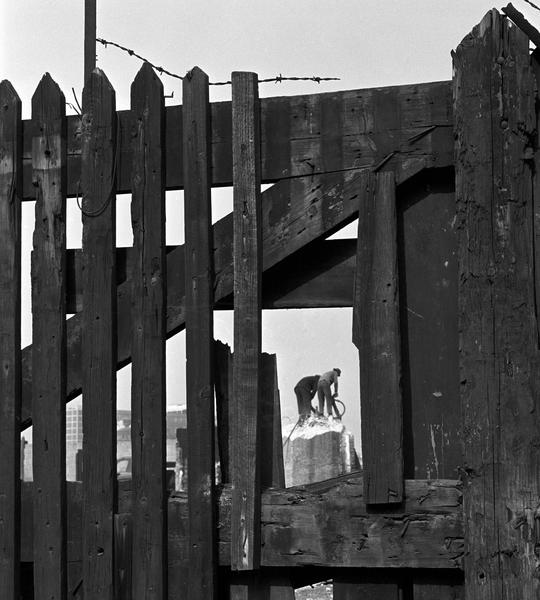Forgotten faces from post-war London
Fred Wilfred made a career from wedding and portrait photography. But his documentary photographs, taken around London between 1957 and 1962, show us something special and fleeting – a city transitioning from post-war hardship to the Swinging Sixties.
1957–1962

Forgotten faces
We don’t know much about many of the people and places Wilfred photographed. He recorded little information to go with his photos. Despite remaining mysterious, each shot provides small clues to the city in this moment in time, whether it’s adverts, or street workers.

Photographing life
Wilfred was born in Islington in 1925. He served in the army and RAF before becoming a successful professional portrait photographer. But he also carried a camera with him almost everywhere he went. His documentary work, shooting London’s people and places, is largely unknown.

Wilfred’s photos are part of our collection
Wilfred died in 2010. We acquired 134 of his photos in 2011 and a year later they were shown in an exhibition at London Museum.

Youth culture
The 1960s were a time of huge social change in London. Young people with more spare time and more disposable income threw off their parents’ demands and habits to create their own identities. Youth subcultures emerged, like the mods and rockers.

Twickenham Lido
The open-air swimming pool in Twickenham, south-west London, opened in 1935 and remained open until 1985. It’s now been converted into a garden, where the outline of the pool and an old diving board are still visible.

Wilfred’s professional career
Wilfred worked as the chief photographer for Hawker Siddeley Aviation during the 1950s. In 1963 he started his own commercial and portrait studio in Hampton Hill, Richmond. Wilfred was a member of the Richmond and Twickenham Photographic Society and a founder-member of the London Portrait Group.

The changing South Bank
Behind this orderly line of seagulls, you can see the faint outline of the Royal Festival Hall and the shot tower. The Royal Festival Hall was built in 1951 for the Festival of Britain – a celebration to signal Britain’s post-war ambitions. The shot tower, used to make shotgun pellets, was demolished in 1967 to make way for the Queen Elizabeth Hall.

The duel
Many of Wilfred’s street photos feature children. It’s no surprise. Playing in the street without adults was normal behaviour then, making kids far more visible than they are today.

Asleep at the wheel
A truck driver catches a quick nap in his cab.

Chestnut stall
A street vendor sells hot chestnuts at a market near Brick Lane in east London, while three of his customers peel and eat them.

What future?
There are signs of a hopeful future in Wilfred’s photos, but the scars of the Second World War linger. Derelict buildings, bombsites and wasteland become places of play for adventurous children.


